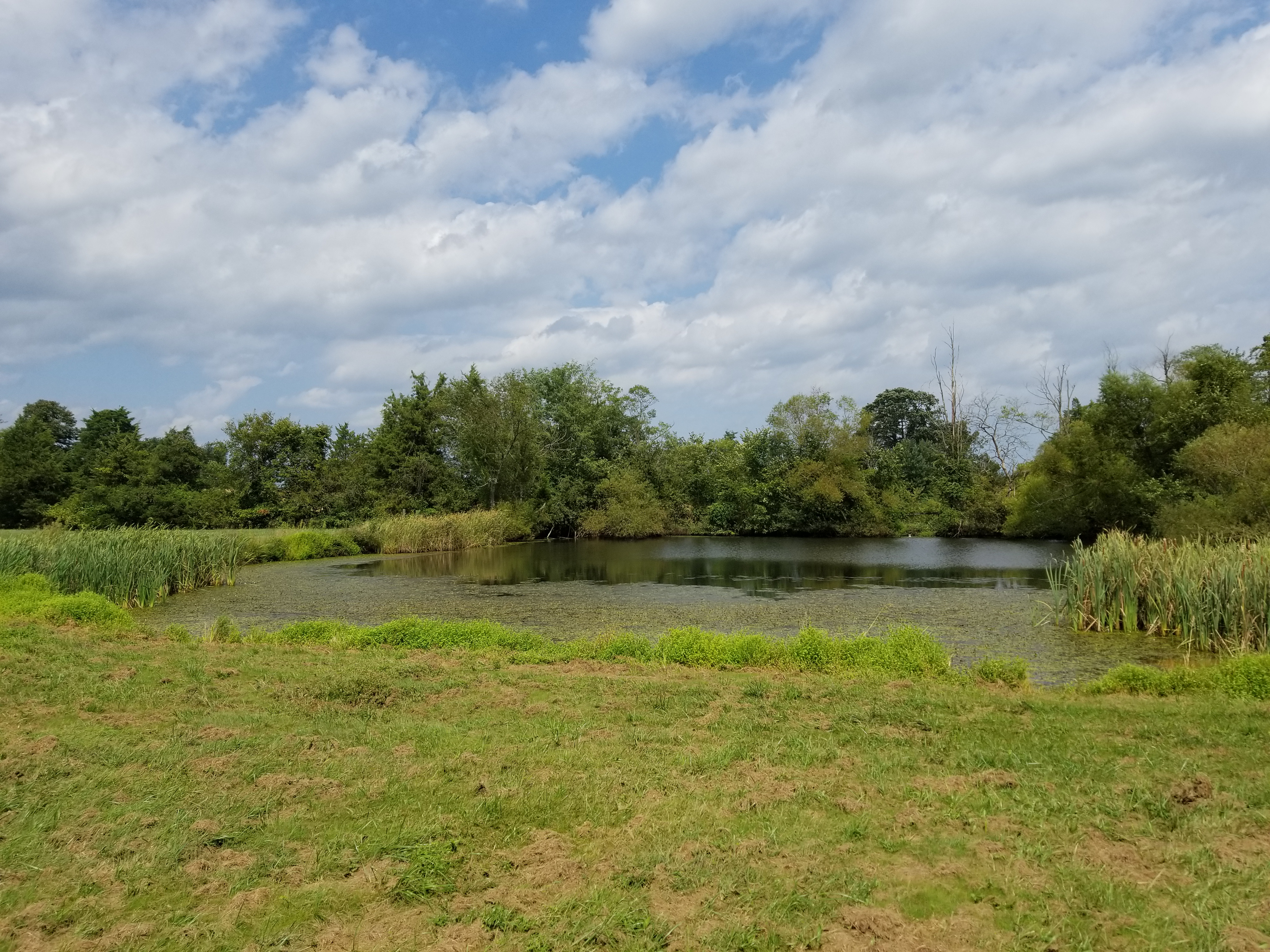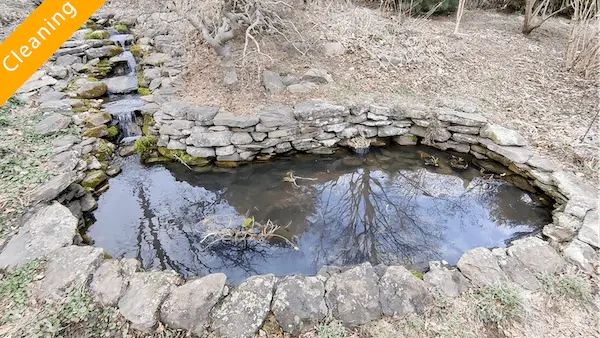

We receive many calls from people who have inherited a pond and would like to learn more about proper maintenance. Certain factors, such as the location of your pond and the amount of sunlight it gets, are harder to change than others so we will focus on the things you can change. Water Level Refilling a goldfish pond after cleaning Every water feature will lose water due to outside factors such as temperature, wind, and humidity. Ideally, you should strive to keep your pond filled to the brim because water stability increases with water volume. This is why bigger aquariums are safer for fish as they are less prone to sudden changes in water parameters such as ammonia spikes. However, not everyone has time to meticulously monitor their pond's water level so at the bare minimum you should keep it at a level where your pump is fully submerged. Most pumps do not come with an auto shut-off so they will continue to run dry, damaging their motors. This could then lead to a pump failure, which can be disastrous especially during the summer months as the water gets warmer. In order for you to determine your max fill line, you must locate where your liner is at its lowest. This is because most ponds are not built completely level so any water you add above this lowest point will always leak out. If you notice you always lose water right after you fill up your pond, it is because you are filling it past the lowest point. Bioload pond with brown water from too much bioload The main contributors of bioload are fish and fish food. Since koi excrete a large amount of waste, you must be cautious not to overfeed them. If your pond is brand new, you will not have any leeway when it comes to excessive bioload since it takes weeks for beneficial bacteria to colonize. This is the reason why green water is so common in newly built ponds. Since these ponds do not have enough bacteria/plants to handle excess nutrients, phytoplankton, the algae that causes the green water, use these leftover nutrients to grow and multiply. In order to prevent this from happening, you should feed your fish every other day an amount that they can consume in 2-3 minutes and remove anything uneaten. Leftover food inside your pond will start to rot, fouling your water. Despite what it may seem, your fish are not starving every time they swim towards you gasping for food. Filtration bog filter diagram All pond filtration systems are designed to simulate how water is filtered in nature. In essence, in the wild, rainwater passes through permeable surfaces such as sand before entering a lake. The water is then further purified by the plants in and around the lake. During this process, harmful contaminants are removed from the water making it safe for the ecosystem. The same principle is applied to pond filtration systems. When water is pumped through filter media such as sponges, it comes into contact with millions of beneficial bacteria, which break down waste and keep your water clear. Although this system is efficient in keeping your water clear and healthy, problems arise when your pump is too weak or when there is not a healthy colony of bacteria. Plants pond with net over it Besides their aesthetic value, plants play a number of important roles in your pond. Surface-blocking plants such as water lilies reduce algae growth by blocking UV rays. In addition to shade, plants create natural hiding spots which help your fish avoid falling prey to predators such as racoon and heron. When it comes to buying plants, we recommend you only buy those inside pots as this will prevent them from overtaking the pond. The saying 'too much of a good thing' certainly applies to plants as many of them are capable of taking up every square inch of your pond. Plants should primarily be placed along the shallow areas as these areas are the most susceptible to algae growth. When designing a pond, we always incorporate 12 inch ledges to serve as plant areas. Rocks pond rocks Whether or not to have rocks inside your pond is always a hot topic of debate. Rocks not only make your pond look more natural but also serve as a breeding ground for good bacteria. For this reason, big filtration systems such as bogs utilize pea gravel because of their ability to house large amounts of bacteria. The biggest concern people have with gravel bottom ponds is maintenance. Having cleaned hundreds of ponds, we can say with certainty that it is not the gravel itself that makes it hard to clean, but rather the angle of the surface at which the gravel sits on. When a pond is built unlevel, it creates hard-to-clean dips and pockets. When debris get inside these pockets, the only way to remove them is with a vacuum, which increases cleaning time. With this in mind, our ponds are designed level but with a slight inward slope so that during maintenance, gravity can assist us move all the waste to the center for easy removal.
